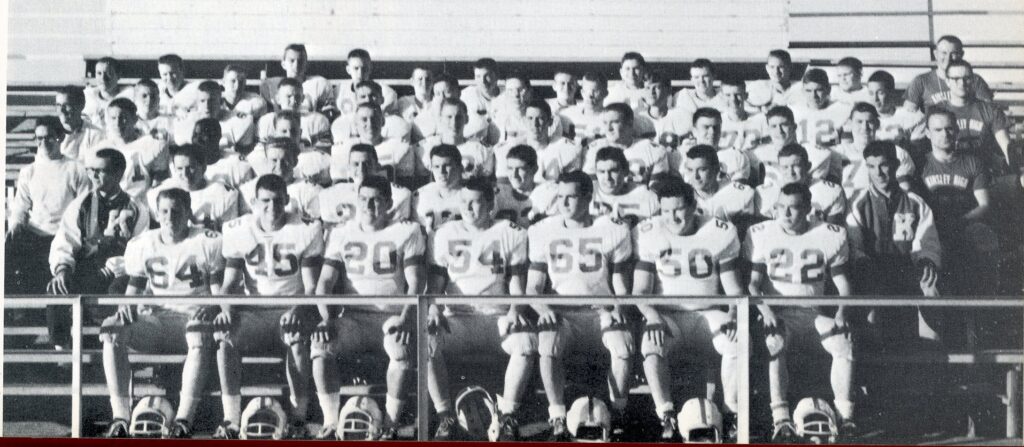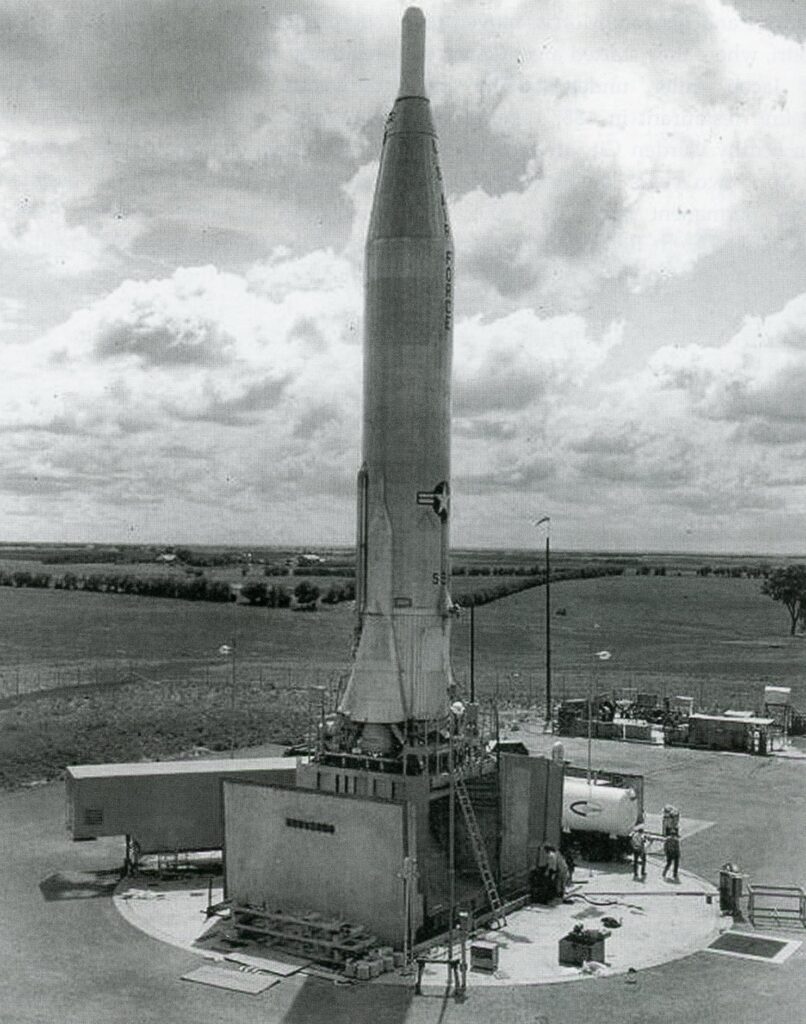Last’s week’s news of Russia’s invasion of the Ukraine shocked the world and put it on edge. Putin’s nuclear threats have also brought back memories for me from sixty years ago when we learned that the Soviet Union was building missile sites in Cuba capable of launching nuclear weapons at the U.S.. October 16-28, 1962 is now known as the Cuban Missile Crisis.
I grew up in Saline, Michigan about 50 miles outside of Detroit. I remember in elementary school being taught how to shelter under my desk to avoid nuclear fallout. Really?!
I was eleven in 1957 when I watched the Soviet Union’s Sputnik, the very first satellite, glide across the night sky. This was only a couple months after they had launched the world’s first intercontinental ballistic missile.
All of a sudden, the U.S. had fallen behind the Soviet Union. Our government quickly enacted educational reforms that required we students to take more classes in science, math and engineering so our nation could regain technological ground.
But it was when I was in high school that I really became aware of and saw how political events could impact me. John F. Kennedy was president, and the Vietnam War was on the horizon. In April, 1961 the Bay of Pigs invasion failed to remove Castro from Cuba. In August, 1961 the Berlin Wall went up.
In 1962, I was a junior. My chosen topic for the speech contest was on the fear that was leading people to build fall-out shelters. When the missile sites were discovered in Cuba, I vividly remember my fear. I worried about survival and about my classmates and older brothers who might be called to defend our country.

Putin’s recent threats have brought all these memories back to me, and have also caused me to wonder what central Kansans were thinking and doing at that time. Industrial Detroit was an obvious target for a missile attack. Were there also targets in the wheat and corn fields of central Kansas?
I found the answer on the library shelves in an article, “Kansas Missiles: Central Kansas and the Nation’s Cold War Nuclear Arsenal, 1959-1963” written by Landry Brewer in the Spring, 2020 issue of Kansas History.
Schilling Air Force base was located at Salina. Early in 1960, it had been decided to install twelve Atlas ICBM missile sites within 50 miles of that base. They were at Bennington, Abilene, Chapman, Carlton, McPherson, Mitchell, Kanopolis, Wilson, Beverly, Tescott, Glasco, and Minneapolis. It was Schilling AFB and these sites that put central Kansas in the cross-hairs for a nuclear attack. That October, the 550th Strategic Missile Squadron at the base was put on high alert.

Shown here is a Convair SM-65F Atlas Missile at the Abilene, Kansas, site circa 1962. Photo is courtesy of the U.S. Air Force as it appeared in Kansas History, Spring, 2020. This article is available at the library or online through the Kansas State Historical Society website: https://www.kshs.org/p/kansas-history-spring-2020/20269
These Atlas missiles sites had been constructed in 1961 for $47 million dollars, a real boon to the local economy. They were big, each being 174’ deep and 52’ in diameter, and were built entirely underground.
According to the Kansas History article, “The Atlas missile was 82.5’ long and 10’ wide and weighed 18,104 pounds when filled with liquid fuel. In flight, the missile reached speeds of 16,000 miles per hour, allowing it to travel nearly 7,000 miles in just 43 minutes, landing within 2 nautical miles of its target. Upon arrival, the Atlas’s warhead would deliver a 4-megaton yield” which was 200 times more powerful than the atomic bombs dropped on Hiroshima and Nagasaki.
The fears I had in Michigan were shared by the people here. Bill Britton was a junior at Lewis High School. “It was scary,” he told me. “I was afraid that we would go to war. It might be one of the reasons I joined the Navy two years later. I ended up serving on the USS Enterprise which had been part of the blockade of Cuba in 1962.”
Marlin Butler also remembers the crisis well. “I was scared, and remember it well. I was in my first year of college at Fort Hays and sitting in the Varsity Barber Shop when President Kennedy came on the TV with the announcement. Some of the guys I knew were in the National Guard, and they were immediately activated. I was scared to death. Later I found out exactly how close we had come to nuclear war.”
The guys having coffee at the pharmacy on Monday all agreed that it was a scary deal, “but Kennedy took care of it. He called Khrushchev’s bluff and the Soviet Union backed down.”
These missile sites in Central Kansas soon became outdated and were all decommissioned by June, 1965. The missiles were shipped away, and the equipment and land were sold.
I will close with this thought from the Kansas History article. “The Kennedy administration operated with the hope that the Soviet Union would not initiate a nuclear war knowing that both countries would be destroyed. This was the essence of the doctrine of ‘mutual assured destruction’ (MAD)…. Soviet leader (Nakita) Khrushchev pleaded with Kennedy by letter to join him in taking the necessary steps to avoid ‘the catastrophe of thermonuclear war’ between the two countries because ‘only lunatics or suicides, who themselves want to perish and to destroy the whole world before they die, could’ allow such a war to happen.”
